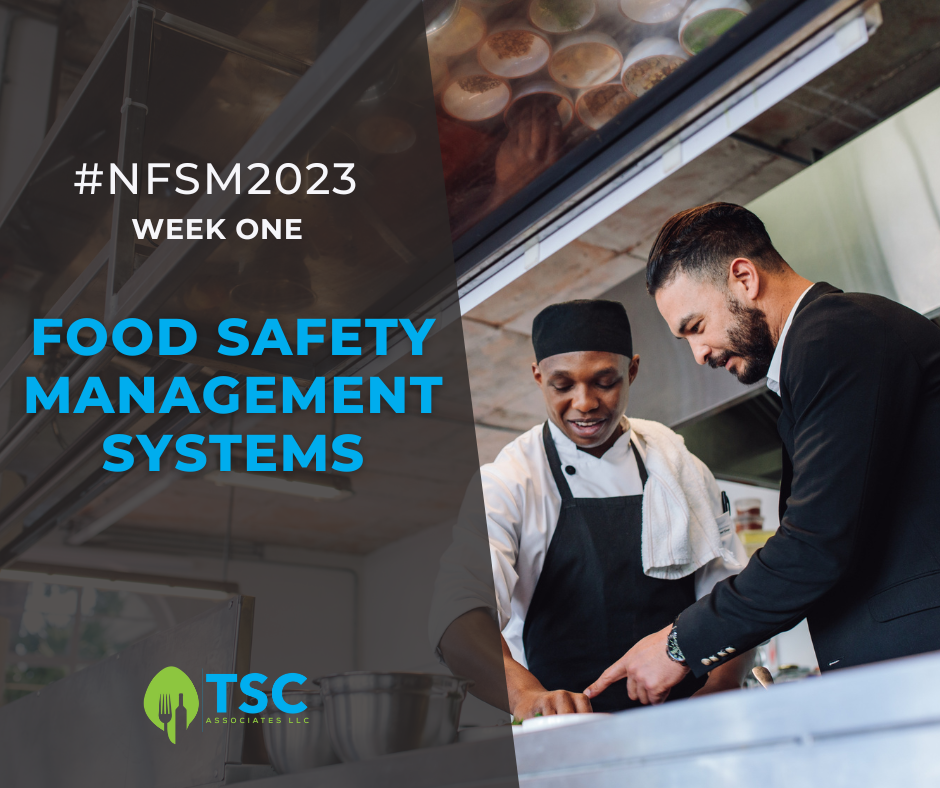The goal of every food establishment is to provide a safe, enjoyable dining experience for its patrons. That is what keeps them coming back, after all! We’re excited to kick off National Food Safety Month (NFSM) 2023 with our series From Squeaky Clean to Safety Seen. In this five week series, we will take a deeper look into how to achieve and maintain a clean food establishment to ensure your patrons feel confident that their safety is your top priority.
Food Safety Management System
A Food Safety Management System (FSMS) is a collection of procedures and practices that are used to manage food safety hazards and prevent foodborne illness. This system of food safety programs is essential to ensuring all food produced and/or served is safe to ingest. Food Safety Management Systems allow active control of risk factors throughout the flow of food.
The foundation of a FSMS is comprised of food safety programs. These programs should include:
- Personal hygiene
- Supplier selection and specification
- Cleaning and sanitation
- Facility design and equipment maintenance
- Food safety training for employees
- Quality control
- Standard operating procedures (SOPs)
- Pest control
A Food Safety Management System must also include proper documentation, periodic audits, and active managerial control.
Active Managerial Control
The responsibility falls on the manager to actively control risk factors in his or her food establishment to prevent the spread of foodborne illnesses. This is referred to as active managerial control. Active managerial control is a proactive approach in which the manager anticipates risks and has a plan to control or eliminate them.
Active managerial control focuses on controlling the five most common risk factors for foodborne illness. Managers must monitor the flow of food, from receiving to serving, in order to keep patrons free from risk. When implementing active managerial control, make sure to follow these important steps:
- Identify Risks – Identify and document potential risks and ways to control or eliminate them.
- Monitor Critical Activities, such as the frequency of temperature checks or how often sanitizer concentrations should be tested.
- Corrective Action – Correct improper procedures or behaviors
- Management Oversight – Ensure all policies, procedures, and corrective actions are being followed.
- Training – Make sure all employees are trained and retrained when necessary.
- Re-evaluation – Regularly assess to make sure the system is working effectively.
HAACP
A Hazard Analysis Critical Control Point (HACCP) program is a system that can be implemented to achieve active managerial control. This system involves identifying significant biological, chemical, and physical hazards within a product’s flow. These hazards can then be prevented, eliminated, or reduced. A HACCP plan is a written plan that is specific to the establishment’s menu, customers, equipment, processes, and operations.
Creating and implementing a comprehensive Food Safety Management System is essential to keeping your customers safe. Safety management and more are covered in our ServSafe Food Manager classes. To learn more about programs you can put into practice at your food establishment, contact TSC Associates today!




